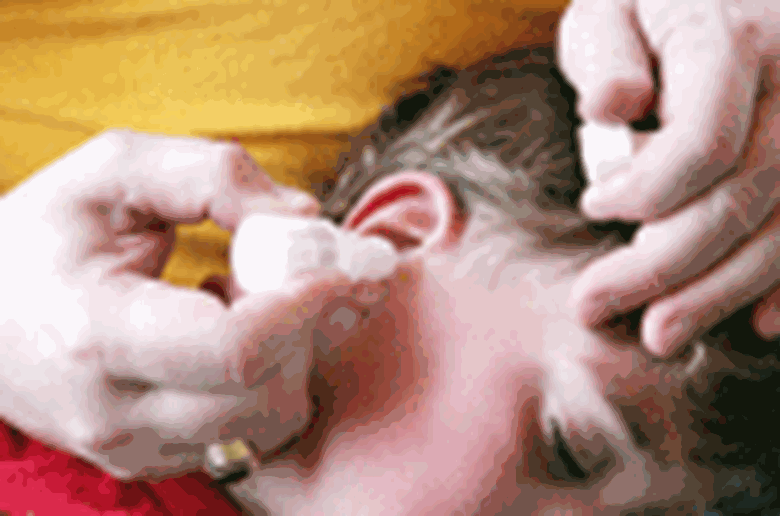A unique child: Health - A doctor's diary ... earache
Dr Raj Thakkar
Monday, July 25, 2011
'Doctor, I'm sorry to bother you, but my daughter has got another ear infection. This is the fourth one this year'

Ear infections sound trivial and in many cases, they are remedied without consequence. Nevertheless, for some children, ear infections have significant symptoms and complications. As always, when in doubt, seek advice from a healthcare professional.
The eardrum, referred to by doctors as the tympanic membrane, separates the middle and outer ear. I will concentrate on infections in these areas, as as inner ear infections are not commonly a disease of childhood.
MIDDLE EAR INFECTIONS
Acute otitis media (AOM) is a common infection of the middle ear, where the smallest bones of the body are found. Children may present with fever, vomiting, fiddling with the ear, irritability, balance problems, runny nose or refusal to feed. Older children may also complain of severe earache and pus may leak from the ear if the eardrum perforates. In children, particularly under six months old, otitis media may be a 'red herring' for a more serious infection such as meningitis.
AOM may have a number of complications, the frequency of which have fallen with the advent of antibiotics. These include infection in both ears, perforation of the eardrum, abscesses, infection in the bone behind the ear called mastoiditis, brain abscesses, meningitis, clots within the brain's venous system, nerve damage and febrile convulsions. In addition, acute otitis media can lead to long-term hearing problems, glue ear and chronic suppurative otitis media.
Treatments for AOM include paracetamol and/or ibuprofen to reduce fever and pain. For many children, antibiotics are not required and medical research has not shown there to be any benefit in uncomplicated cases. Suffice it to say, there are situations where a doctor will offer a delayed prescription to use only under certain criteria, or suggest starting a course of antibiotics immediately. Indications for antibiotics include when a child has:
- been unwell with fever, vomiting or convulsions
- other medical problems
- AOM for more than a few days without improvement
- AOM in both ears
- discharge in the ear canal
- a perforated eardrum.
Glue ear
Chronic otitis media describes recurrent or ongoing infection, whereas otitis media with effusion (OME), more commonly known as glue ear, causes earache, loss of hearing and recurrent ear or upper respiratory tract infections.
A child with OME may appear uninterested or withdrawn, or display signs of anger and frustration. Their speech and language may not develop appropriately and the child may appear off-balance.
Specialised tests such as tympanometry may help confirm the diagnosis. In the main, doctors may decide to observe the child over six to 12 weeks, usually because the condition often resolves itself without treatment. Some children with OME affecting both ears, or those who are significantly affected, may be offered hearing aids or a balloon device in the nose to help release the pressure in the middle ear. Grommets may also be suggested. These tubes, which are inserted into the eardrum, have been shown to improve hearing.
CSOM
Chronic suppurative otitis media (CSOM) is diagnosed when there is discharge from the ear via a perforated eardrum and hearing loss for at least two weeks in the absence of pain or fever. CSOM is particularly likely in patients who have had acute otitis media in the past or, indeed, glue ear and grommets.
Patients with CSOM need assessment to exclude serious complications, including mastoiditis, nerve damage, infections of the brain, vertigo and hearing problems. Treatment generally requires the help of an ear, nose and throat specialist and may include careful cleaning of the ears, antibiotics and even surgery.
OUTER EAR INFECTIONS
Infections of the outer ear canal (otitis externa) may be divided into a number of different subtypes.
Acute diffuse otitis externa is fairly rapid in onset and affects the majority of the outer ear canal. It may be triggered by swimming or the use of cotton buds. Pain, reduced hearing, itching and discharge are common symptoms. There is an eczema-type inflammatory reaction that may or may not be complicated by either a bacterial or even fungal infection.
As well as avoiding such triggers and offering painkillers, treatment options include prescribed eardrops and sprays. Debris in the outer ear canal may need to be removed before treatment. In some cases, otitis externa may lead to an infection in the deeper skin layers known as cellulitis. This will need to be treated with oral or, in some cases, intravenous antibiotics.
Chronic diffuse otitis externa tends to be caused by inflammatory or fungal infections and is often treated with drops containing steroids and anti-fungal agents. Localised otitis externa tends to be caused by a bacterial infection that usually causes pain and is resolved with antiobiotics.
Dr Raj Thakkar BSc(Hons) MBBS MRCGP MRCP(UK) is a full-time GP in Buckinghamshire.




